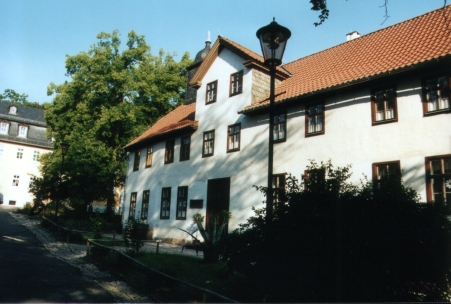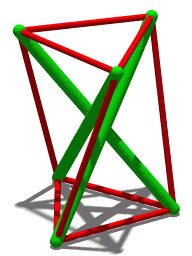|
Buckminster Fuller
Richard Buckminster Fuller (; July 12, 1895 – July 1, 1983) was an American architect, systems theorist, writer, designer, inventor, philosopher, and futurist. He styled his name as R. Buckminster Fuller in his writings, publishing more than 30 books and coining or popularizing such terms as " Spaceship Earth", "Dymaxion" (e.g., Dymaxion house, Dymaxion car, Dymaxion map), " ephemeralization", " synergetics", and "tensegrity". Fuller developed numerous inventions, mainly architectural designs, and popularized the widely known geodesic dome; carbon molecules known as fullerenes were later named by scientists for their structural and mathematical resemblance to geodesic spheres. He also served as the second World President of Mensa International from 1974 to 1983. Fuller was awarded 28 United States patents and many honorary doctorates. In 1960, he was awarded the Frank P. Brown Medal from The Franklin Institute. He was elected an honorary member of Phi Beta Kappa in 1 ... [...More Info...] [...Related Items...] OR: [Wikipedia] [Google] [Baidu] |
Milton, Massachusetts
Milton is a town in Norfolk County, Massachusetts, United States. Milton is an immediate southern suburb of Boston, Massachusetts. The population was 28,630 at the 2020 United States census, 2020 census. Milton is located in the relatively hilly area between the Neponset River and Blue Hills Reservation, Blue Hills, bounded by Brush Hill to the west, Milton Hill to the east, Blue Hills Reservation, Blue Hills to the south and the Neponset River to the north. It is also bordered by Boston, Massachusetts, Boston's Dorchester, Massachusetts, Dorchester and Mattapan, Massachusetts, Mattapan district to the north and its Hyde Park, Massachusetts, Hyde Park district to the west; with the neighboring Massachusetts city of Quincy, Massachusetts, Quincy to the east and the towns of Randolph, Massachusetts, Randolph to the south, and Canton, Massachusetts, Canton to the west. History Indigenous peoples The area now known as Milton was inhabited for more than ten thousand years prior to Eur ... [...More Info...] [...Related Items...] OR: [Wikipedia] [Google] [Baidu] |
Cloud Nine (sphere)
Cloud Nine is the name Buckminster Fuller gave to his proposed airborne habitats created from giant geodesic spheres, which might be made to levitate by slightly heating the air inside above the ambient temperature. Geodesic spheres become stronger (and relative to the volume enclosed, lighter) as they become bigger, because of how they distribute stress over their surfaces. As a sphere gets bigger, the volume it encloses grows much faster than the mass of the enclosing structure itself. Fuller suggested that the mass of a mile-wide geodesic sphere would be negligible compared to the mass of the air trapped within it. He suggested that if the air inside such a sphere were heated even by one degree higher than the ambient temperature of its surroundings, the sphere could become airborne. He calculated that such a balloon could lift a considerable mass, and hence that 'mini-cities' or airborne towns of thousands of people could be built in this way. A Cloud Nine could be tether ... [...More Info...] [...Related Items...] OR: [Wikipedia] [Google] [Baidu] |
Friedrich Fröbel
Friedrich Wilhelm August Fröbel or Froebel (; 21 April 1782 – 21 June 1852) was a German pedagogue, a student of Johann Heinrich Pestalozzi, who laid the foundation for modern education based on the recognition that children have unique needs and capabilities. He created the concept of the ''kindergarten'' and coined the word, which soon entered the English language as well. He also developed the educational toys known as Froebel gifts. Biography Friedrich Fröbel was born at Oberweißbach in the Principality of Schwarzburg-Rudolstadt in Thuringia. A cousin of his was the mother of , and Henriette became a student of his. Fröbel's father, Johann Jacob Fröbel, who died in 1802, was the pastor of the orthodox Lutheran (alt-lutherisch) parish there. Fröbel's mother's name was Jacobine Eleonore Friederike (born Hoffmann). The church and Lutheran Christian faith were pillars in Fröbel's own early education. Oberweißbach was a wealthy village in the Thuringian Forest and ... [...More Info...] [...Related Items...] OR: [Wikipedia] [Google] [Baidu] |
Tensegrity
Tensegrity, tensional integrity or floating compression is a structural principle based on a system of isolated components under compression (physical), compression inside a network of continuous tension (mechanics), tension, and arranged in such a way that the compressed members (usually bars or struts) do not touch each other while the Prestressed structure, prestressed tensioned members (usually cables or tendons) delineate the system spatially. Tensegrity structures are found in both nature and human-made objects: in the human body, the bones are held in compression while the connective tissues are held in tension, and the same principles have been applied to furniture and architectural design and beyond. The term was coined by Buckminster Fuller in the 1960s as a portmanteau of "tensional integrity". Core concept Tensegrity is characterized by several foundational principles that define its unique properties: # Continuous tension: Fundamental to tensegrity, the tensi ... [...More Info...] [...Related Items...] OR: [Wikipedia] [Google] [Baidu] |
Synergetics (Fuller)
Synergetics is the empirical study of systems in transformation, with an emphasis on whole system behaviors unpredicted by the behavior of any components in isolation. R. Buckminster Fuller (1895–1983) named and pioneered the field. His two-volume work ''Synergetics: Explorations in the Geometry of Thinking'', in collaboration with E. J. Applewhite, distills a lifetime of research into book form. Since systems are identifiable at every scale, synergetics is necessarily interdisciplinary, embracing a broad range of scientific and philosophical topics, especially in the area of geometry, wherein the tetrahedron features as Fuller's model of the simplest system. Despite mainstream endorsements such as the prologue by Arthur Loeb, and positive dust cover blurbs by U Thant and Arthur C. Clarke, along with the posthumous naming of the carbon allotrope "buckminsterfullerene", synergetics remains an off-beat subject, ignored for decades by most traditional curricula and academic dep ... [...More Info...] [...Related Items...] OR: [Wikipedia] [Google] [Baidu] |
Space Frame
In architecture and structural engineering, a space frame or space structure (Three-dimensional space, 3D truss) is a rigid, lightweight, truss-like structure constructed from interlocking struts in a geometry, geometric pattern. Space frames can be used to span large areas with few interior supports. Like the truss, a space frame is strong because of the inherent rigidity of the triangle; flexing Structural load, loads (bending moment (physics), moments) are transmitted as tension (mechanics), tension and compression (physical), compression loads along the length of each strut. Chief applications include buildings and vehicles. History Alexander Graham Bell from 1898 to 1908 developed space frames based on tetrahedral geometry. Bell's interest was primarily in using them to make rigid frames for nautical and aeronautical engineering, with the tetrahedral kite, tetrahedral truss being one of his inventions. Mero-Schmidlin, Max Mengeringhausen developed the space grid system cal ... [...More Info...] [...Related Items...] OR: [Wikipedia] [Google] [Baidu] |
Geoscope
The Geoscope was a proposal by Buckminster Fuller around 1960 to create a globe that would be covered in colored lights so that it could function as a large spherical display. It was envisioned that the Geoscope would be connected to computers which would allow it to display both historical and current data, and enable people to visualize large scale patterns around the world. Several projects by his students to build a "miniature Earth", starting with a 20-foot version at Cornell University in 1952, were precursors of the Geoscope proposal. Before proposing the Geoscope, Fuller had invented the Dymaxion map, a novel map projection for the whole Earth. Many of Fuller's ideas for the functions of the Geoscope are now being realized by virtual globes. Fuller did not limit his use of the term "Geoscope" to the diameter globe proposed for installation near the headquarters of the United Nations in New York City (on a ledge of rocks in the middle of the East River now named U Thant ... [...More Info...] [...Related Items...] OR: [Wikipedia] [Google] [Baidu] |
Dymaxion Map
The Dymaxion map projection, also called the Fuller projection, is a kind of polyhedral map projection of the Earth's surface onto the unfolded net of an icosahedron. The resulting map is heavily interrupted in order to reduce shape and size distortion compared to other world maps, but the interruptions are chosen to lie in the ocean. The projection was invented by Buckminster Fuller. In 1943, Fuller proposed a projection onto a cuboctahedron, which he called the ''Dymaxion World'', using the name ''Dymaxion'' which he also applied to several of his other inventions. In 1954, Fuller and cartographer Shoji Sadao produced an updated Dymaxion map, the Airocean World Map, based on an icosahedron with a few of the triangular faces cut to avoid breaks in landmasses. The Dymaxion projection is intended for representations of the entire Earth. History The March 1, 1943, edition of ''Life'' magazine included a photographic essay titled "Life Presents R. Buckminster Fuller's Dymaxio ... [...More Info...] [...Related Items...] OR: [Wikipedia] [Google] [Baidu] |
Dymaxion Car
The Dymaxion car was designed by American inventor Buckminster Fuller during the Great Depression and featured prominently at Chicago's 1933/1934 World's Fair. Fuller built three experimental prototypes with naval architect Starling Burgess – using donated money as well as a family inheritance – to explore not an automobile per se, but the 'ground-taxiing phase' of a vehicle that might one day be designed to fly, land and drive – an "Omni-Medium Transport". Fuller associated the word ''Dymaxion'' with much of his work, a portmanteau of the words ''dynamic'', ''maximum'', and ''tension'', to summarize his goal to do more with less. The Dymaxion's aerodynamic bodywork was designed for increased fuel efficiency and top speed, and its platform featured a lightweight hinged chassis, rear-mounted V8 engine, front-wheel drive (a rare ''RF'' layout), and three wheels. With steering via its third wheel at the rear (capable of 90° steering lock), the vehicle co ... [...More Info...] [...Related Items...] OR: [Wikipedia] [Google] [Baidu] |
Dymaxion
Dymaxion is a term coined by architect and inventor Buckminster Fuller and associated with much of his work, prominently his Dymaxion house and Dymaxion car. A portmanteau of the words ''dynamic'', ''maximum'', and ''tension'', Dymaxion sums up the goal of his study, "maximum gain of advantage from minimal energy input". Description A name was needed for the display of Fuller's first architectural model, later to be known as the Dymaxion house, at the Marshall Field's department store in Chicago. To create the name, wordsmith Waldo Warren was hired by Marshall Field's and spent two days listening to Fuller, getting a feel for his idiosyncratic use of language—later playing with the syllables typical of Fuller's speech until he and Fuller agreed on the word ''Dymaxion''. Fuller used the word for many of his inventions during the decades to follow, including the Dymaxion house, the Dymaxion deployment unit, the Dymaxion car, and the Dymaxion map, Dymaxion world map. Dyma ... [...More Info...] [...Related Items...] OR: [Wikipedia] [Google] [Baidu] |
Ephemeralization
Ephemeralization, a term coined by R. Buckminster Fuller in 1938, is the ability of technological advancement to do "more and more with less and less until eventually you can do everything with nothing," that is, an accelerating increase in the efficiency of achieving the same or more output (products, services, information, etc.) while requiring less input (effort, time, materials, resources, etc.). R. Buckminster Fuller, '' Nine Chains to the Moon'', Anchor Books, 1938, 1973, pp. 252–59. The application of materials and technology in modern cell phones, compared to older computers and phones, exemplify the concepts of ephemeralization whereby technological advancement can drive efficiency in the form of fewer materials being used to provide greater utility (more functionality with less resource use). Fuller's vision was that ephemeralization, through technological progress, could result in ever-increasing standards of living for an ever-growing population. The concept h ... [...More Info...] [...Related Items...] OR: [Wikipedia] [Google] [Baidu] |






